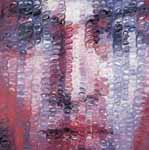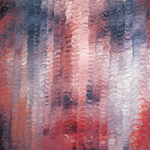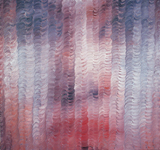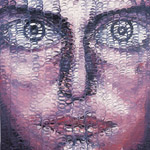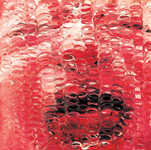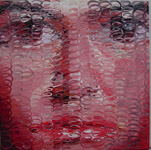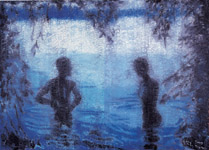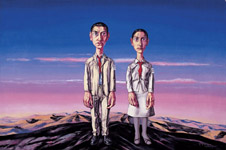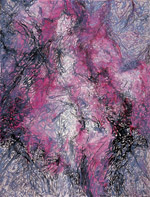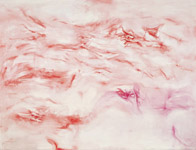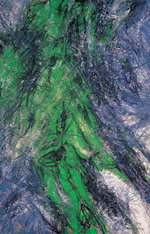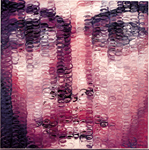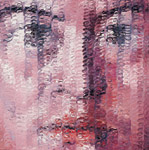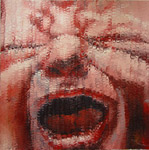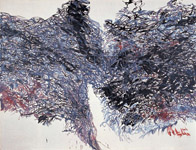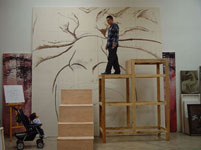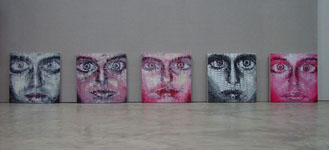|
I/ We: the Paintings of Zeng Fanzhi 1991-2003,
March 8-15, Shanghai Art Museum ( 325 Nanjing Xi Rd.)
(opening Saturday, March 8th 2003, 4.00pm)
With the opening of his solo exhibition at the Shanghai Art Museum in March
2003, Zeng Fanzhi is only the third contemporary Chinese artist to enjoy the
privilege of a retrospective show in the Shanghai Art Museum.
"I/We: the Paintings of Zeng Fanzhi 1991-2003" gives an overview of Zeng
Fanzhi's impressive body of works of the past 12 years. The show includes
over 40 of Zeng Fanzhi's works, many borrowed back from private and public
collections for this occasion.
The exhibition is not only a unique chance to review the work of one of the
most interesting young artists working in China today - Zeng Fanzhi is only
39 years old -, but will also be a good opportunity for the public to get
further understanding of Chinese contemporary art through the work of one
individual, outstanding artists.
The exhibition will be accompanied by an extensive catalogue with essays by
Robert Morgan, Li Xianting, Pi Li, Toshio Shimizu and Karen Smith.
Some history:
Zeng Fanzhi was born in 1964 in Wuhan, Hubei. In 1991 he graduated from Oil
Painting department, Hubei Academy of Fine Arts. After his first exhibition
in Wuhan got good reactions from critics in the capital, Zeng Fanzhi moved
to Beijing in 1992 as an independent artist. This was very rare at that
period when most artists were associated to a school or an other 'unit'.
In the last decade, Zeng Fanzhi' works were exhibited in a number of
important international exhibitions, such as China's New Art, Post-1989,
(1992, Hong Kong Art Center), Out of Middle Kingdom: Chinese Avant-Gardes
Art (1995, Santa Monica Arts Center, Barcelona), House of World Culture
(1995, Berlin), Question Marks (Singapore National Museum of Arts, 1997),
Paris-Beijing (Espace Cardin, Paris, 2002) etc.
Since the middle-1990s, Zeng Fanzhi began again to exhibit more also in
China itself. His works were shown in different museums und galleries from
Beijing, to Shanghai, Guangzhou etc. Exhibitions include: 50 Years of
Chinese Oil Painting (1999, National Art Museum), New Images (2001, National
Art Museum Beijing; Shanghai Art Museum; Guangzhou Art Museum; Sichuan Art
Museum, Chengdu). Zeng Fanzhi held several solo exhibitions in Hong Kong,
Shanghai and Beijing.
The work:
Zeng Fanzhi likes to use the painting brush and the language of his brush
work is direct. The success of Zeng Fanzhi's works is closely related to his
mature expressionist style and the attention he pays to his subject, the
young urban people, people from his own generation, the generation of the
20something at the beginning of Zeng Fanzhi's carrier to the 30something of
today. You can follow the dreams, anxieties, worries, wishes, the
happiness, regrets and search for identity of this generation in Zeng
Fanzhi's work of the last 12 years. Zeng Fanzhi gave this generation a face.
In his earlier works - when the artist was only in his late twenties - Zeng
Fanzhi dealt in very direct, expressionistic stile with the theme of death,
sickness and pain, creating very convincing image of people rather
defenceless exposed to the troubles of everyday's life.
After Zeng Fanzhi moved to Beijing, the mask became the most significant
symbol of his paintings. For the years to follow, Zeng Fanzhi painted his
figures - often depicted in front of simple, smooth backgrounds - with masks
which try to cover the face, but still didn't hide the feelings of his
figures, their emotions remained clearly expressed.
Zeng Fanzhi is driving his search for expression relentlessly forward and is
developing his style continously. The figures he started to paint in the
past years where without masks again, direkt portraits of people facing the
life.
In his recent works, another transformation occurred. The directness of Zeng
Fanzhi's early works re-emerged. In addition to the normal bush strokes with
which he build the even larger faces, the artist began to cover the painting
with a second structure of quick, round lines. While they are destroying the
integrality of the image, they also provide it with a new sense of
dimensionality and urgency.
Just like any work of art, the works of Zeng Fanzhi will provoke different
reactions from different people. But what is sure, there is a clear line of
development in Zeng Fanzhi's work over the years, a development which is
related to the unprecedented urbanization and change of Chinese society
which the artists and his generation experienced in the last few years.
|
我和我们:曾梵志的绘画1992-2003
由上海美术馆举办的“我和我们:曾梵志的绘画1992-2003”便是曾梵志艺术生涯的一个阶段总结性展览。这个展览囊括了过去各个时期艺术家创作的代表作品近40余件。曾梵志1964年生于湖北武汉,1991年毕业于湖北美术学院油画系。此后他曾参加了“90年代中国艺术双年展”(1992年,广州)“后八九:中国新艺术展”(1993年,香港),“中国”(1996年,波恩)。作为90年代中国当代绘画的代表画家,曾梵志在过去先后在武汉、北京、上海和香港举办了一系列个展,并引起国内外美术界的关注。
对于熟悉中国当代绘画的人来说,曾梵志的在90年代的成功是和他成熟的表现主义风格,对死亡题材的关注密切相关的。在这些作品中,油画语言本身的直接性,绘画的速度感以及年轻生命对死亡、疾病、痛苦的独特关注为他赢得了一片好评。进入90年代以后,面具成为了他作品中主要符号。曾梵志在他的面具系列中深刻而简洁的捕捉住了都市化过程中,人们的生活、交往和存在方式发生的前所未有的变化。在他的面具系列中深刻而简洁地捕捉住了这一切。随着面具系列的深入,作品开始变得明亮,各种风景也开始出现在作品的背景中。在这些作品中幽默与焦虑两种截然相反的情绪交织着,而这些正是都市化生活所赋予我们体验的两极。2001年以来,曾梵志的创作更加强调绘画的直接性,而他用来传递这种直接性的语言则是画面中的“未完成感。”艺术家通过画面的未完成感、冲突感来唤起观众的本能、直觉的甚至是生理上本能的“反应”。在过去的10年中,曾梵志凭借着他特殊的敏感创造出了一系列当代人的精神肖像。这些肖像是“我”也是“我们”。
曾梵志的创作是近10年来中国艺术发展的一个侧面,在这些创作中我们不仅能把握中国社会变化的某种轨迹,同时也能更深刻地体会到中国艺术家在全球化和都市化格局下的艰难探索。从这个意义上说,在当代艺术的背景下,曾梵志的回顾展不仅呈现出他的艺术发展的脉络,同时对我们研究和了解中国当代艺术也有着重要的个案价值。
|


